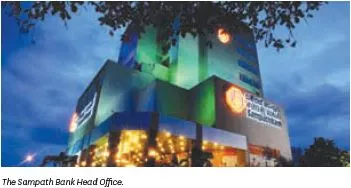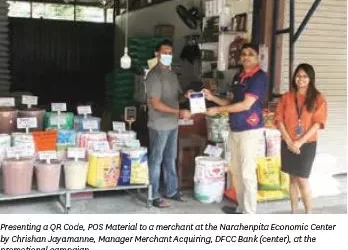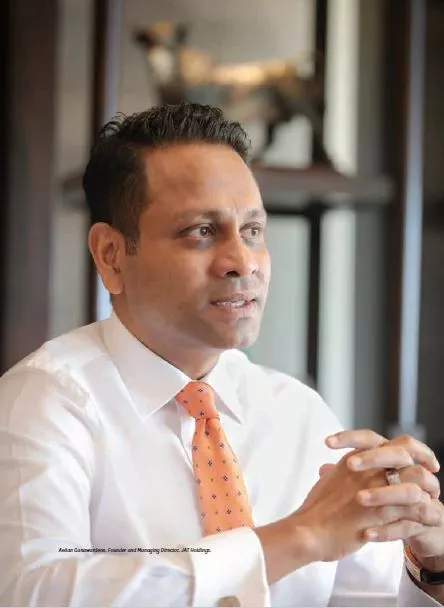
As a fully-owned Sri Lankan company, JAT Holdings, which ventured into the industrial wood coating segment with a revolutionary offering of PU Coatings in 1993 and waterbased wood coatings in 1998, is a diversified multinational company with a growth potential of unprecedented proportions. Aelian Gunawardene, Founder and Managing Director, JAT Holdings, spoke about the company’s status amidst the current business climate, the impact of Government regulations, their plans for expansion within Sri Lanka, the proposals for extending their lucrative international market segment beyond the existing model, and the eagerly-anticipated IPO.
Photography Menaka Aravinda.
Can you tell us about the journey of the company since its inception?
In 1993, as the Marketing Manager of Delmege Paints, I recommended that the company pay more attention to the industrial market and the retail market, which they had a strong presence. My market research made it abundantly clear that the Nitrocellulose (NC) base lacquer coatings used in the wood furniture industry were inferior and needed replacement with a better product. Similarly, at the time, only enamel paint was on offer for steel furniture. The research also showed that while steel furniture should be coated with powder coating, the wood furniture required a two-pack polyurethane (PU) product to achieve superior quality. The NC paint in use needed five coats, had no resistance to chemicals, scratching, or heat. For instance, placing a hot cup of water or an accidental drop of another chemical substance on the surface left an indelible mark. Therefore, I introduced a two-pack polyurethane product to the market. Since we didn’t have the technology to manufacture it, I spoke to Sayerlack, an Italian company that was the best wood coating company in the world at the time.
We negotiated with Sayerlack in the hope of launching it through the company I used to work for, and although it was considered an excellent idea, the progress was slow. I had by then interacted with the market. I realized there was interest in my submission, so I returned to the principals to explain the slow pace of the Sri Lankan Corporate business culture prevalent at the time. In turn, they proposed that I join them in this collaboration.
Twenty-six years old, with two young children, I had no external financial support, possessed only a car and a regular salary. Although life was quite comfortable, we had no reserves. I was not from a wealthy family; all we possessed was my wife’s house and property, which we mortgaged to the bank. I negotiated credit with the supplier, and then we went ahead and shipped out two consignments. With the belief in God’s guidance and my self-confidence, I resigned from Delmege Paints. That, in a nutshell, was the start of JAT.
Introducing these products to the market meant that I had to change the wood finish technology from a single pack NC to a two-pack PU coating. The industry practice was to mix thinner to NC Sealer and Lacquer, and being a single component product NC had no pot life. However, with PU lacquers, when the catalyst and the resin are mixed, the product has to be used within three hours (it has a limited three-hour pot life). The challenge was to change the whole technology, which we did exceptionally successfully. As a result, we have control above 60 to 70 percent of the Industrial market since 1994.
In 1998, we introduced water-based lacquers, which was again a revolutionary technological change. A felled tree has 50-60 percent moisture, which we need to reduce by seasoning the sawn timber to about 12 percent before converting it to furniture. Adding water to an already treated piece of wood, which has an approximate 12 percent moisture content, will jeopardize the treatment to eliminate moisture and insect attacks. We offered the technology of applying water on timber for the first time without increasing its moisture content. Although it was a significant change, we successfully made that transition in the market. Today, we sell over 400 million rupees of water-based coatings in Sri Lanka per month. The lacquer used before was dispersed in a volatile organic solvent. Every time a solvent base lacquer is used and dries, the solvent’s toxicity evaporates into the environment. By incorporating our new product concept, we eliminated this health and environmental hazard permanently. Italy consumes the highest water-based coatings globally, and Sri Lanka ranks second. Incredibly, Sri Lanka is the second largest, environment-friendly, and non-toxic water-based lacquer-consuming country in the world. The credit of which belongs in no uncertain terms to JAT Holdings.
The company’s next goal was to venture overseas. Consequently, we entered Bangladesh in 2002. At the time, Bangladesh was a market that used eight coats of solvent-based polish to finish furniture, which took three days. After demonstrating the advantages of the two-pack PU coatings and UV coatings, we achieved success. Today, JAT is considered close and honorable partners by the Bangladeshi furniture industry, where we proudly control about 70 percent of its market. This venture caused tremendous expansion in our exports, and it has been an incredible journey for us as JAT holdings.
To transform the market towards an environment-friendly product and offer a more competitive price, we have spoken with the Ministry of Industries, Treasury, and the Sri Lanka Customs many times. We have appealed to them to remove the excessive 35 percent CESS on the water-based resin used to manufacture water-based coatings. These resins are over 3.45 Euros per liter, which adds to the cost. However, this change has still not materialized. As the Sri Lankan Paint Manufacturers Association’s Advisory Committee Chairman, I have taken this matter up with all relevant authorities. We intend to reduce the use of toxic solvent-based coatings. H.E. the President Gotabaya Rajapaksa has also shown significant concerns about the environment. We have faith that his administration will recognize the benefits of this CESS reduction and implement the necessary changes.
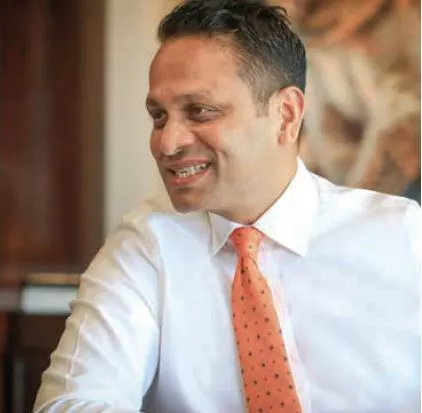
How did the name JAT Holdings come about?
We formed JAT in 1993. We derived J from my brother-in-law’s name – Jizvii, while the A was from me, Aelian, and the T from my brother’s name Tyrone. In 1997, we segregated the three companies we owned and I ended up with 100 percent of JAT Holdings. In 2014, I brought in several strategic investors, such as Dr. Siva Selliah and a few others, by divesting eight percent of the organization. Three years later, the IFC, the Dutch Fund, the German Fund, Zephyr, and NDB acquired six percent of the company through their Emerald Fund. Akbar Brothers purchased six percent of JAT at a valuation of about ten billion rupees, creating a significant value for the original investors. The company has an annual dividend payment policy of a minimum of 40 percent of profit. In 2021, JAT has the possibility of being one of the first three companies in Sri Lanka to IPO after a long lapse. Our investment bankers CAL and NDB’s projected valuation is around 17 billion rupees, out of which we would offer a 25 percent discount at the IPO.
We feel it is an excellent achievement. As a Sri Lankan company, I want to emphasize that we have revolutionized the construction industry by supplying all requisites from durable, aesthetic flooring to the world’s most superlative ceilings. We do the manufacturing of aluminum and steel ceilings at our factory in Kahathuduwa. Among our exports are water-based PU paint and brushes, including the Harris brushes and Brush Master brushes. We have a factory to manufacture brushes and colors for the export market in the Free Trade Zone.
I am proud that JAT Holdings is the only private company with a Moody’s A+ Stable rating, which is a significant achievement. It’s the only private company in the country to have this rating. We are also one of the few private companies with a positive cash flow; we have zero debt. One of the reasons for the IFC and other entities to join us is our corporate governance structure and how we run the company that is 100 percent above board. We have already introduced the required committees and governance structures of a listed Company.
About two-thirds of the board of directors are external; we also have the best board in terms of gender balance; we have three ladies on the board. Most public quoted companies are yet to recognize the invaluable contribution women can make and that the time has come to shatter the glass ceiling. I am proud of the achievements we have made and the quality we have brought into everything we do. Every team member at JAT uses a high-quality Herman Miller ergonomic task chair because it is synonymous with our workforce’s quality. In demonstrating how much we value our staff, we have provided them with a congenial environment by including a free buffet lunch, an in-house gym, a basketball court, and a movie night once a month in our 200-seater auditorium. We offer a reward of a million rupees for the individual who reduces the most body mass each year to achieve a healthy lifestyle. The concept is that if you believe in health, then you should also live it. My dream and vision are to help reduce the sugar intake to eliminate the onset of debilitating diseases such as diabetes. To further this end, I’m willing to award even two million rupees as an incentive.
Recently we conducted a 10X program among our strategic team and also focused on our corporate culture. Here, we realized that we had always lived by four Corporate values since our inception: the in-depth knowledge of the entire business, leadership at all levels, complete customer satisfaction, and continuous improvement and innovation. Being productive and result-oriented is as essential to us as living the values in our daily lives.
When you started on your own in 1993, big players in the market were in the manufacturing sector, with many years of experience. How did you take that risk?
I am inherently a risk-taker. Like I said, at 26 years with two children, it was a significant risk that I took venturing on my own. I had no financial backing to fall back on. I was only six when my father died at the young age of 50. But the confidence I had then and even now in everything I do, is incredible. I know that there is no way I cannot rise above a challenge and rise above even failure; this is not to say that I have not had failures through the years. We have launched several products and businesses where we faced numerous issues. However, there is no substitute for diligence, perseverance, self-belief, and motivation backed up with confidence. Fortunately, my suppliers saw the potential in me and trusted us. Today, 27 years later, we are their most significant partner in the world. For instance, until seven years ago, Russia was the most lucrative market for the American Company Sherwin Williams. Today, JAT Holdings is their most significant partner in the world.
One must look for a niche in the market that is not satisfied, and if one has the confidence and is willing to put in the effort, there is no reason to fail. Sri Lankans typically want to do what some other person is doing. For instance, if ten people have engaged in a business, others follow. If someone does a food truck, another will start right next to it. I have made similar mistakes, such as creating a mask manufacturing factory in Kolkata, India, eight months ago, considering the huge demand. We used the latest technology to manufacture these masks. However, a mask’s price has reduced gradually to 20 rupees, which was hardly sufficient to cover costs. Moreover, since demand diminished, prices have tumbled even further.
My day never ends before ten at night. I have assured my staff that they can call me even at that time of the night if a need arises. Twentyseven years down the line, I still work as hard as I did at the start. I know it’s not the proper working method, and I believe there is a better way to do it. I don’t endorse it, and neither do I recommend it, but I think there is no other way to be world-class. If you want to be competitive, you are compelled to live on the edge. In the event you wish to change a culture, you have to set an example. If you can identify a vacuum and have a solution for it and are willing to work as hard as you can, you should never let finance, bureaucracy, or competition deter you. Accordingly, I have helped many small companies set up their enterprises because I have seen people with passion run them.
I believe in being world-class. I have also learned that you cannot do everything by yourself. That’s why we have a Board of Directors, Executive Directors, a CEO, a Management Committee, and an entire team to manage every contingency. It certainly helps if you learn not to micro-manage and delegate your work and trust in people’s skill and integrity. That’s something I am still getting used to, but I believe I am getting there.
We operate in Bangladesh, India, Pakistan, the Maldives, and the Sri Lankan market. For a small Sri Lankan company to achieve these accolades is incredible.
Why had the big players of the industry not seen the opportunity?
The fault lies in complacency and the level of contentment such entities enjoyed. For instance, one big player in Sri Lanka sells an international brand of wall paint. They were content as they possessed a significant market share for its core brand. Therefore, we targeted the industrial market initially. Our sales results in 2020 indicate that we have performed several times better in terms of all the paint marketing companies in Sri Lanka. I represent the biggest paint company in the world – Sherwin Williams. More than the turnover, it is the bottom line that is important. A particular foreign paint brand in Sri Lanka does six times the volume we do, but their bottom line is negative. I was appointed the Chairman of the Sri Lanka Paint Manufacturers Association’s Advisory Committee. The first thing that I proposed to the Ministry of Industries was to stress that we could not allow large foreignowned companies to bring their products into our market without controls. They are dumping prices and dumping credit to the market. We have 50 Sri Lankan-owned paint manufacturers in this country, small-time manufacturers; we cannot let them fail; we have to help them rise. Companies with a budget of ten million dollars will destroy the smaller local manufacturers through their sales and marketing strategies. Because we at JAT could match our competitors’ dollar for dollar, we have withstood this intense pressure.
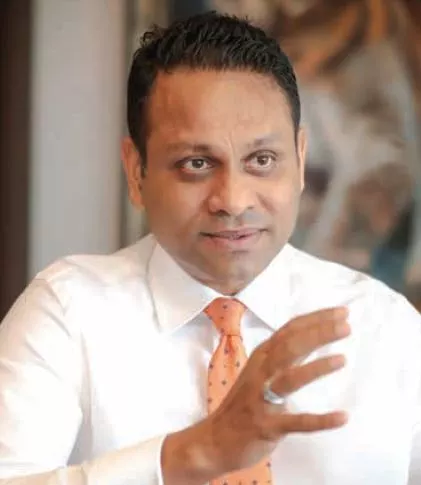
The major local manufacturers do not focus on a particular market. In marketing, we look at a niche that is not satisfied. If we believe that we can satisfy that niche more satisfactorily than the competitor, we go for it. That is my business principle. In everything I do, I look for a niche.
When you started JAT, people didn’t know the person or the face behind the company. But people became familiar with JAT. How was this achieved?
I have always been an ardent sportsman. I represented my alma mater – S. Thomas’ College, in basketball, rugby and taken an active part in school athletics and cricket. I still play basketball and work out regularly. Since sport is part and parcel of my life, my association with Sri Lanka Cricket, Sri Lanka Rugby, Sri Lanka Basketball, and Golf are as natural as they are vital. Even when we were a small company and had a significantly less budget our desire was to support sports. Unfortunately, many conglomerates in Sri Lanka are averse to sponsor sport as they don’t see its value. I think it’s a plus, and I don’t consider it to be an expense wasted. Advertising is a plus. Even some of our senior team wonder whether there would be a positive result in spending 250 million rupees on advertising every year. I think it’s essential to get your message across – one that sends a strong signal that we at JAT support our sportsmen and women in stamping their place in the world arena while showcasing our brand on a world stage.
It was in 1998 that, for the first time, we initiated an ad campaign for Sayerlack. It was a beautiful and effective advertisement. At that time, we were only supplying the industrial market, and all the furniture manufacturers and hotels were using our products. As we had 70 percent of the industrial market, we were pretty comfortable. However, I knew that I had to get the retail customer also to use our products. While the large furniture manufacturers used our products, I wanted every painter to ask for JAT water-based paint, and that is what we achieved through advertising.
Recently, JAT Holdings entered into a sponsorship with Sri Lanka Cricket as the exclusive Sri Lankan Cricket team’s overseas sponsor. Even though the sport is suffering, we will continue to sponsor the team because Sri Lanka Cricket is one of our best brands. Since there are two good companies supporting cricket, Dialog and JAT, it is time that we together lift this sport. Again, it was a bold move, and the annual cost is high. Today, we pump four to five percent of our total revenue into advertising and marketing, and it pays off. As a cash-positive company, we are in a great place today.
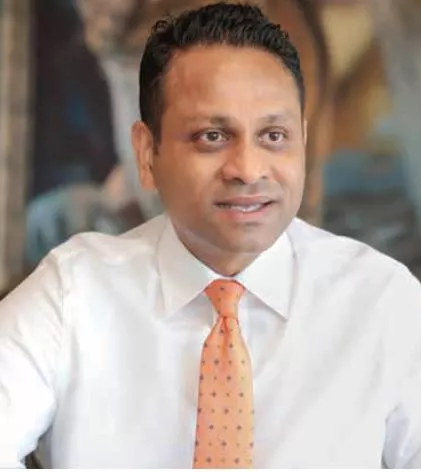
How is it that for someone who started so young, it’s not you, but the company that has come forward?
Richard Branson, whom I am acquainted with, has done a marvelous job in marketing himself even more than his own brand Virgin. He is the personality behind the brand, while Virgin is secondary. I believe in doing it differently. For me, there is no ‘I’ in the team; it’s foremost a team effort. It would be futile to believe that I could have brought this company to what it is today, on my own. I do possess the burning passion. I can have the indefatigable drive, and I can work ceaselessly, but if you don’t have the people to put their shoulders to the wheel and push and pull and live the dream, it will amount to nothing. That’s why I think it’s more critical today to establish a brand than a personality. The JAT brand has excellent value. If you care to observe, we have internationally showcased the JAT brand at numerous sporting events and exhibitions throughout Asia.
However, no one knows it’s Aelian or my CEO behind the JAT brand. In Bangladesh and India, everyone knows the JAT brand because of our association with cricket. For the people in these countries, cricket is a religion. When you sponsor Sri Lankan Cricket, you get visibility. It’s like Hero Honda in India. Our marketing strategy has been vital for us, and we have a good team in marketing. I handled marketing personally for 15 years. However, now that task has been handed over to the JAT head of marketing and his brilliant team.
‘White by JAT’ is a new brand, which we launched recently on December 26, 2020. We have featured the brand on the Sri Lankan Cricket team’s jersey, which is the first time we have done this type of publicity. It is a brilliant white emulsion and weather shield delivered to your doorstep at a 40 percent discount for the market’s best quality product. One could order the product directly online by visiting whitebyjat.com.
Making paint is not a highly complex exercise. It’s similar to making a cake. We add the ingredients, and accordingly, you can either make a product as good as your competitor’s or one that is better than your competitor’s. It’s very technical but quite a simple decision. It’s a matter of how much margin one wants to keep. As we go directly to the customer, we can offer them the benefit of price and still make a decent margin while giving them the best product. ‘White by JAT’ is available online through whitebyjat.com. I’m promoting it through cricket, which I hope will allow us to sell at least 200 million rupees per month of just white paint. It is challenging to sell colors online because people like to see the color personally. We are yet to achieve that level of technology in Sri Lanka to view colors online. There is no issue in ordering brilliant white. Therefore, ‘White by JAT’ is our newest venture.
In terms of the Group could you tell us about the other subsidiary companies?
JAT Holdings has diversified into property and real estate as well. We do high-rise projects. We are also constructing 103 houses in Hantana and another 18 houses in Kandy. We block and sell real estate under the JAT Property umbrella. JAT Technologies sells Turbosound and Sonos for the entertainment industry. We are possibly one of the three top companies involved in the mobile backbone and fiber optic laying for mobile companies. JAT Agri is an agri-based solutions company primarily selling only non-toxic antifungal products for agriculture as Nano copper.
We have also offered a solution from JAT Agri to the Ministry of Agriculture to desist from normal urea to a coated urea product. Sri Lanka purchases above 120 million dollars worth of urea, totaling 400,000 tons per annum. I have advised the Ministry to promote coated urea, comprising slow-release properties, which would save the economy over 60 million dollars a year. We have submitted concept papers on moving from generation one fertilizer to generation three fertilizer. We believe that the Ministry would accept our concept since five percent of the urea does not go to the farmer. It is industries that use this subsidized product to produce Urea Formaldehyde glue in factories. In India, the industry does not sell even one kilo of urea without a coat on it. However, in Sri Lanka, the Fertilizer Corporation distributes 400,000 tons without coating. We should learn from the example set by our neighbors when we can.
With our subsidiary, Bileeta, a cloud-based ERP systems provider, I have discussed a logistics management system for the COVID-19 vaccine rollout. We have been doing this even before Sri Lanka began rolling out vaccines for COVID-19. We were moving vaccines to the remotest places in Nepal, in the Philippines, and Zimbabwe. Bileeta has the software to manage the process methodically and efficiently. In Sri Lanka, every individual that received the first vaccine received a card. I am not privy to how they plan to manage the tracking process, but we have a system for the world that is similar to an e-passport. I am offering software that is worth over 300 million rupees free of charge to the Government to do this. Countries trying to develop this software are spending about 30 to 40 million dollars in the process. We intend to take Bileeta to the US stock market soon. Every tender we have done internationally has received overwhelming recognition and accolades. Bileeta is acknowledged as a cold supply chain management software in Sri Lanka. It is documented as the only fully compliant solution in the world for Health Commodity supply management by researchers from WHO, USAID, Bill and Melinda Gates Foundation, the GAVI, and The Global Fund. We have offered to provide the Bileeta software free of charge to Sri Lanka’s Government; we have even informed the Presidential Secretariat to give it to five other countries to combat COVID-19. I believe that the President and the Government can use this as a goodwill gesture.
We have developed Bileeta 100 percent locally. We have over 120 developers. I liked the product so much that I bought Bileeta’s ERP solution for JAT about six to seven years ago. I am so impressed by their product that I purchased it for JAT since I wholly believe in its value. I am working with some investment bankers in the US to promote it internationally. We have a unique product world-renowned by every single organization in the industry.
Do you think Bileeta might be among the few Sri Lankan companies that have offered products while most others have been only offering support services but not developing new products?
Yes, most have not developed software of their own. The President and the Government want to allow Sri Lankan companies to thrive. My discussion with ICTA chairperson Jayantha de Silva was also on this aspect. The CEB needs software, likewise the Ministry of Environment. The Ministry of Health had paid a significant amount for software and continues to pay an annual fee to a foreign company. We can give the same or better service at a lesser price because it’s our product. Unfortunately, certain things fall on deaf ears even though everyone knows about them. IT specialists will develop the software, but are not marketers; therefore, I have personally assisted with the marketing function of Bileeta to the world.
We are negotiating to buy another IT company in Malaysia called ABSS that has 340,000 customers on QuickBooks. It’s a desktop version. We can now give intuition to our ERP solution, which will make the 340,000 customers to a million customers and move them out of a desktop to a cloud version. This company has 49 percent of public shares. We are currently negotiating, and I hope to reach an agreement soon. It is guaranteed to increase the ABSS and Bileeta’s valuation to a much higher level if it does.
What was the reason to diversify into various segments?
The reason for diversifying our product portfolio and into other markets is because we want to spread our risks and not be dependent on a single product or market. The Sri Lankan market suffered a huge hit when the Easter Sunday bombings happened. What kept us afloat were our foreign markets. The first thing that we did as COVID-19 hit us was to launch into the production of sanitizer. We were the first to do this in the paint industry. We did it the next day after the Government imposed the lockdown, and it was the only product we could sell for the two months of lockdown because only essential services were allowed to function. This line of business helped us to cover our overheads. I am sure that we are one of the very few Sri Lankan companies that did not deduct employee salaries and had zero retrenchments during COVID-19. Although we reduced wages for March and April, we back-paid employees in June.
Sri Lanka has the best vein graphite globally; there is no other country that has vein graphite. The flake graphite found elsewhere is of inferior quality. The most significant usage of graphite is for the production of lithium-ion batteries. Hence, our focus should be to encourage such companies to set up battery manufacturing plants in Sri Lanka. It is a venture the Government should seriously be considering.
What is on my agenda next is to set up a plant to manufacture titanium. We export ilmenite from Sri Lanka at 300 dollars per ton, and we import titanium at 2,800 dollars per ton. I have forwarded a proposal to the Ministry of Industries, requesting them to provide us with the required amount of ilmenite to convert it to titanium for the paint industry. We will set up the plant by ourselves. Those who import titanium will be the stakeholders who will buy the plant’s titanium. This initiative will benefit our export market while reducing imports.
What prompted you to decide to go public?
While we do not require external funds currently, we believe it would unlock the company’s vast potential. We believe this would enhance our portfolio and endorse its credence and function as a platform to list even our regional companies in countries such as Bangladesh.
For instance, Indigo Paints went public in India a few weeks back, at a price-to-earnings ratio of 70 times of its previous year’s profit (for JAT in Sri Lanka, it would be only about ten times.)
Once we list in Sri Lanka, one of the many projects we hope to implement is the setting up a manufacturing plant in Bangladesh. Right now, we export from Sri Lanka to Bangladesh. Establishing a manufacturing plant there will help us go public in Bangladesh as well. In Bangladesh, the multiple is about 40 times the previous year’s profit.
What are your plans for the future?
The IPO, launch of ‘White by JAT,’ and the expansion into Bangladesh are the steps earmarked at present.
There is scope in Sri Lanka to produce much more locally. Our agro-business, unfortunately, is suffering because there is very little technology implemented. The agriculture industry abroad does the harvesting process with automation. It is prudent to consider how we can improve something without having economies of scale. Economies of scale are imperative for success.
For the first time in Sri Lanka, we will import a High-Pressure Processing (HPP) machine, allowing fresh milk consumption without the need to boil it. The boiling of fresh milk is essential since it contains volumes of harmful bacteria. The only other way to extend the shelf life of fresh milk today is through Ultra Heat Treatment (UHT) or Pasteurization. Unfortunately, UHT destroys most of the nutritional value in the milk. The shelf life of fresh milk is limited to only seven days after pasteurization. The latest HPP technology described as cold processing is done only by two or three companies globally, and we are the only company to adopt this technology in Sri Lanka. Using low-temperature water pressure to neutralize all the harmful bacteria, we increase the shelf life of fresh milk to 51 days. This technology can extend pasteurized milk with seven days shelf life to 120 days. Try to envisage consumers’ benefits if this technology preserves milk’s total nutrition value without boiling it. There will be tremendous savings with a longer shelf life and prevents the criminal waste of throwing away fresh dairy, which is the current practice.
Doing business is a most invigorating, exciting, and rewarding experience. I am proud and honored to have a Board of Directors comprising luminaries who have supported and guided me through the years. The board naturally does not approve of everything I propose. An investment committee vets all proposals and makes decisions. Only then will it meet with Board approval.
As an entrepreneur, I take calculated risks, and I have to explore avenues to improve constantly. We believe if one tries ten new things, at least eight will succeed. The norm internationally is at least three should work, but an 80 percent success rate is the high bar we have set for ourselves.


